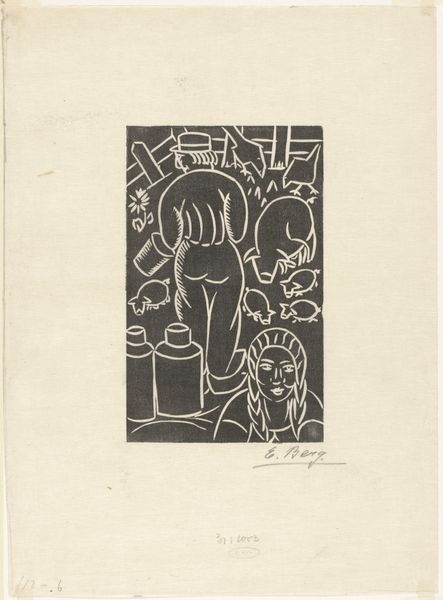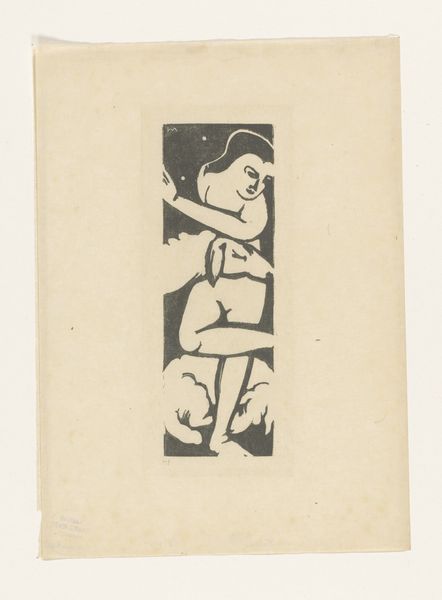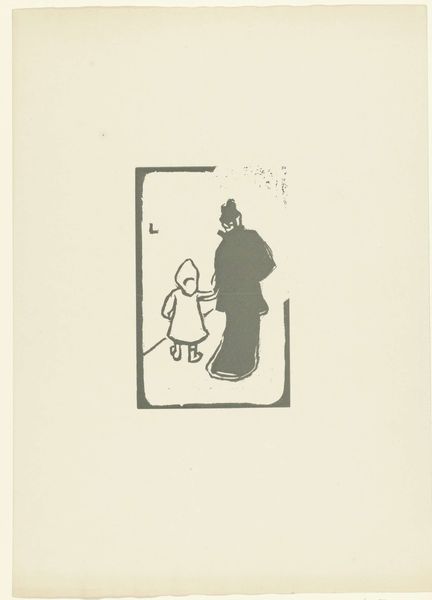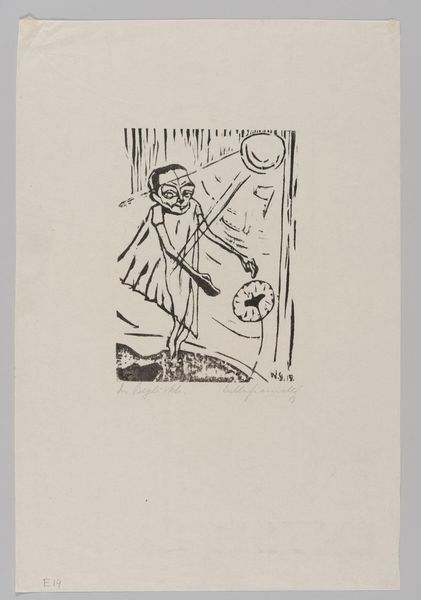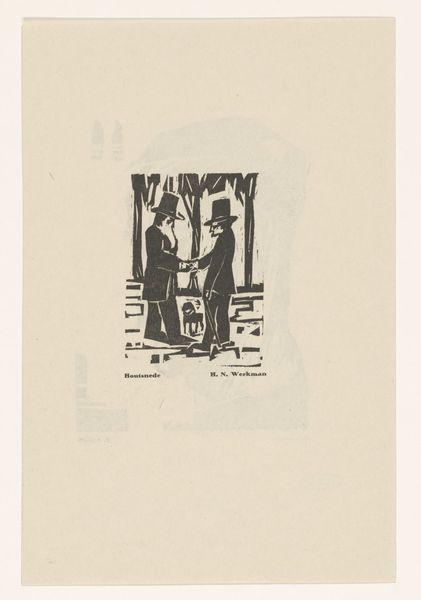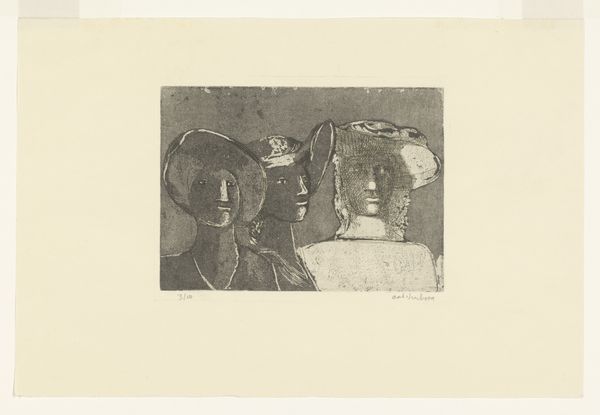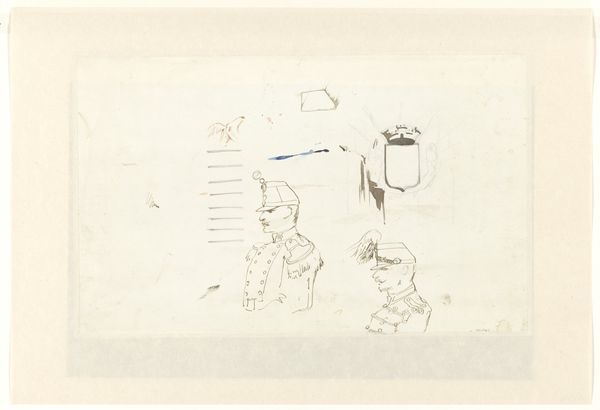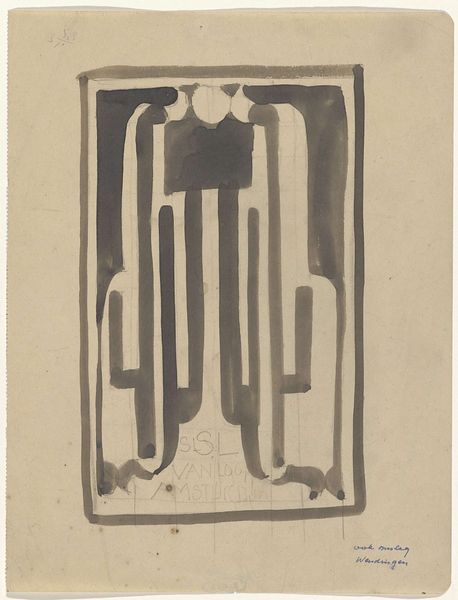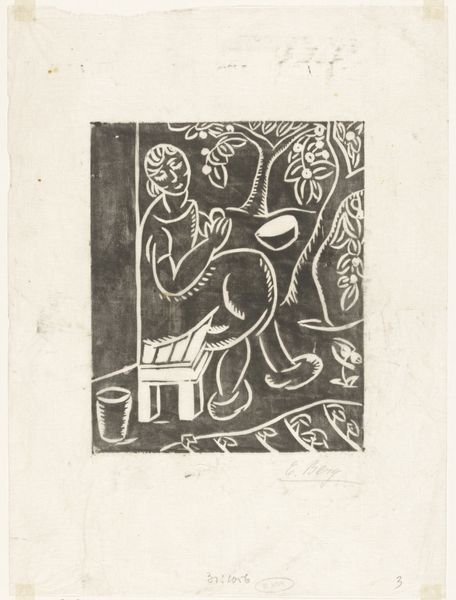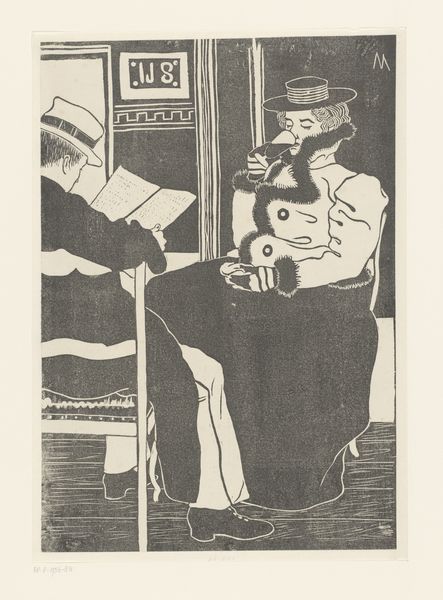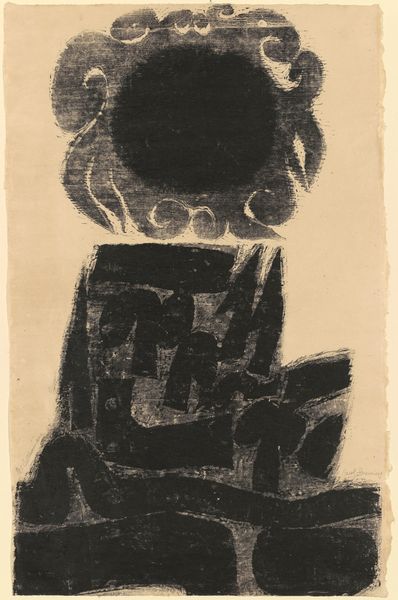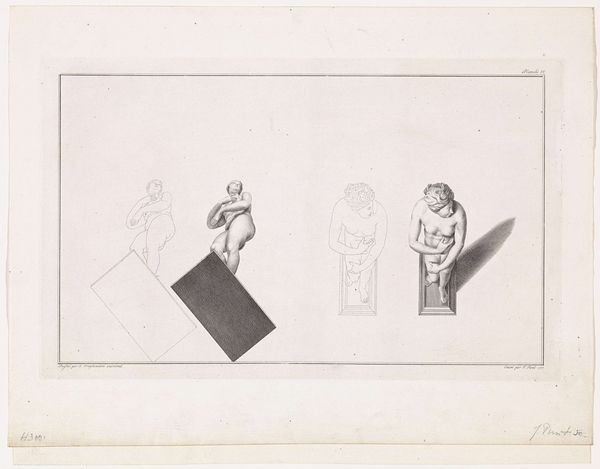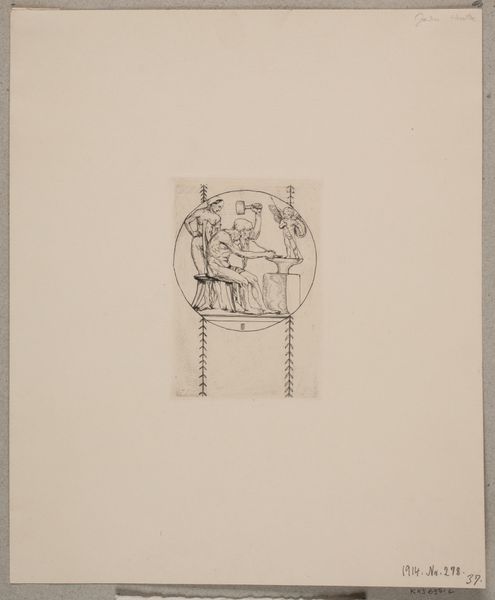
graphic-art, mixed-media, print, linocut
#
graphic-art
#
mixed-media
# print
#
linocut
#
figuration
#
geometric
#
modernism
Dimensions: height 126 mm, width 198 mm
Copyright: Rijks Museum: Open Domain
Curator: Let’s take a look at "Stilleven," a print by H. Tol created around 1925. The medium here is particularly interesting: a linocut, which lends itself to these bold, graphic shapes. Editor: It’s stark. High contrast, clearly defined lines. It makes me think about the power dynamics inherent in representation—the artist's choices, what is included, what is left out. Curator: Yes, and that contrast really emphasizes the symbolism at play. Notice the placement of the bottle, perhaps medicine or perfume, alongside the stylized figure. Both rendered in this very blocky, geometric style common in modernism. Editor: The figure definitely captures my attention. Is it meant to reference an African sculpture, or perhaps echo some indigenous imagery? Its presence alongside what appears to be a commonplace, domestic object forces a dialogue about colonialism, cultural appropriation. Curator: It could be argued either way. The geometric simplification also speaks to broader modernist aesthetics, looking back to ancient, simpler forms—perhaps echoing a primal sensibility. There’s definitely a reaching towards some sort of cultural origin being communicated. The form reflects enduring qualities over time, almost archetypical. Editor: I think that 'reaching' you’re talking about is problematic, though. Without understanding the social history informing these forms, you perpetuate a superficial engagement that flattens cultural context. Curator: I understand your point. Even without explicitly stating intention, visual vocabulary evolves through borrowing and reinterpreting—leading to interesting, sometimes fraught, cultural hybridity. The juxtaposition makes us ponder meaning and context in any space, real or imagined. Editor: The geometric treatment of each figure almost serves as a kind of erasure, which has consequences that have implications to the artist, and us as consumers or art. I see the lasting weight, not the endurance. Curator: I can definitely see it that way. It is really thought-provoking to engage with, how these basic visual structures work and transform our perceptions. Editor: Exactly. It pushes me to think harder about cultural history, the implications of a colonial mindset—the ways this gaze continues in present time. It has me considering art’s future roles in liberation.
Comments
No comments
Be the first to comment and join the conversation on the ultimate creative platform.
